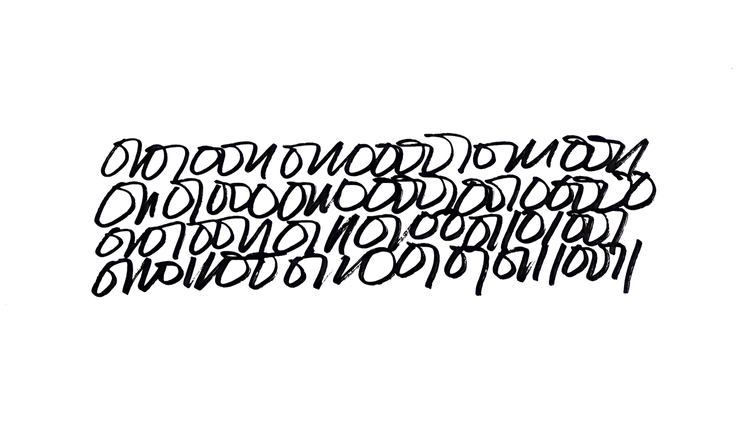IMN #33 — Operator

It's Monday Night #33
Tonight, let’s share thoughts about Unsigned by @operator_______ and @postanika: the transformation of 100 women and non-binary artists' signatures into collectible artworks - a powerful experimentation both political and artistic.
At first sight, the principle of the project is very simple. In the art market, a woman or non-binary artist's signature "normally" results in a decrease in the symbolic value and price of the artwork.
This is an observation that anyone can make, which reflects power relations based on gender and at the same time brings us back to the enigma that founds the value of a work of art.
It must be said again: the art that is not signed by men continues to sell for less and to be less exhibited, it is also underrepresented in the books of art history.
Rather than denounce or criticize this fact, @operator_______ and @postanika decided to take this problem at its roots, performatively.
With "Unsigned", they deconstruct the fetishism of the male signature in the evaluation of works in a context (the blockchain, the smart-contract) which, precisely, made any signature anachronistic.
As we know, there are four objective criteria that define the value of a work (its prestige and its price): authenticity, provenance, condition and legislation in force.
Signature is, in the collective imagination, the proof of authenticity of a work of art.
Actually, this is only partly true: the methods of authentication of a painting, a sculpture or a photograph are never based on the signature alone, even if the graphological analysis of the latter sometimes plays an important role in the verification process.
But signature is also a myth. It is a material element (a small graphic inscription) which belongs and does not belong to the work of art.
It belongs to it, because it exists within the same medium as the work - moreover, signature is meant to be seen, its size, its colors, its positioning are not chosen by chance.
Signature is, in a sense, an "aesthetic" form, at least a mark that has been stylized in order to find a place in the artwork.
But, on the other hand, signature remains external to the work of art.
First, because, unlike everything else, signature is a pure invariant: a signature has value only because it does not change over time and circumstances, it is immutable regardless of the subject, the mode of representation or the period.
Secondly, because the act of signing is different from the act of creating - thus, signature is generally placed in a discreet, peripheral location that does not alter the aesthetic perception, so as to be forgotten.
It is both a surplus and absolutely necessary.
One creates and only then signs what has been created. There is nothing natural about it. We are so used to it that we are no longer able to be surprised by it.
But why should a proper noun (i.e. a symbol without any meaning) be added to the artwork? Isn't the work itself a reflection of its author, by its perfection or by its imperfection, by its style, material, form?
Signing is an act of enunciation, which has somehow a performative value. One really becomes the author of a work only by signing it. In a sense, the signature makes the author, not the other way around.
What counts, moreover, is not so much the proper name as such as the way it is written, its irregularities, its singularities: a signature is the sensitive manifestation of a personality and an idiosyncrasy. In theory, it cannot be copied.
The "Unsigned" project questions the meaning of any signature, it reframes in close-up this grapheme that Western art has constantly fetishized - any book signing can testify to this: the handwritten name is far more valuable than the name printed on the cover.
Nevertheless, the signatures gathered in "Unsigned" have one "negative" thing in common - they are not male signatures.
In other words, they have all that mysterious magical power that makes them capable of lowering the value of a painting by their mere presence on the canvas.
"Unsigned" performs a double subtraction: on the one hand, it removes the artist's signature from any work of art; on the other hand, it deprives all artworks of their author's signature. These remain unsigned.
As a result, what is highlighted is an abstract signature - stripped down, black on white, out of context. Of course, writings are more or less nice and legible, but at the same time there is something neutral, null, decidedly insignificant in each of them.
No matter how hard we look for the secret of the devaluing power of these signatures on the art market, we cannot find it - the secret is absent, as are the works from which this collection of signatures of women and non-binary artists had to be wrested.
On the other hand, the collection directs our attention to works that, at least virtually, exist somewhere, without their signature.
The principle of the performance is minimal but conceptually challenging: by putting the signature - fetish in front of our eyes, @operator_______ and @postanika draw our attention to the unsigned - but missing - works.
Yet these unsigned works are both dispossessed of something and liberated from something - the assignment to an identity, a relationship of authority.
These absent and unsigned works are as if anonymized, de-identified, and can now be appreciated for what they are, independently of the social identity of their supposed author.
On the other hand, @operator_______ and @postanika play dialectically with the properties of blockchain as a medium: the signature, normally inimitable, becomes infinitely reproducible when digitalized, but it finds a new criterion of authenticity when tokenized.
The signatures of the 100 invited women and non-binary artists, which were "devaluing" artworks, become in themselves - by virtue of the fact that they are gathered together - an object of value, affirmed and claimed as such.